Granada Tour
Tour around the city center of Granada in an easy waling distance.
Red points indicate the most relevant places. Each item provides a short description of the place.
Alhambra Tour
Patio de Comares / de los Arrayanes / de la Alberca
- The palace and tower are also named “Comares”. It keeps the Salón del Trono (Throne Room).
- Started by Yusuf I and finished by Muhammad V in October 1369 (conquered Algerciras).
- Their successors lived here with their wives (Muley Hacén with Isabel de Solís).
- There are 4 houses (2 in each side) for each of the 4 allowed wives of the king.
- The passage between the vegetation and the houses was widened during 1923-24 for the visits. Translation results
- Golden ratio on the pool floor, north portico central arch and alhanías (small chambers to each side of north portico).
- Rectangles of proportion 2 and square root of 3 for the rest of archs.
- “Pajaritas” mosaic, influenced Escher, dutch artist (1898-1972), e.g. “Reptiles”.
Pórtico Norte.
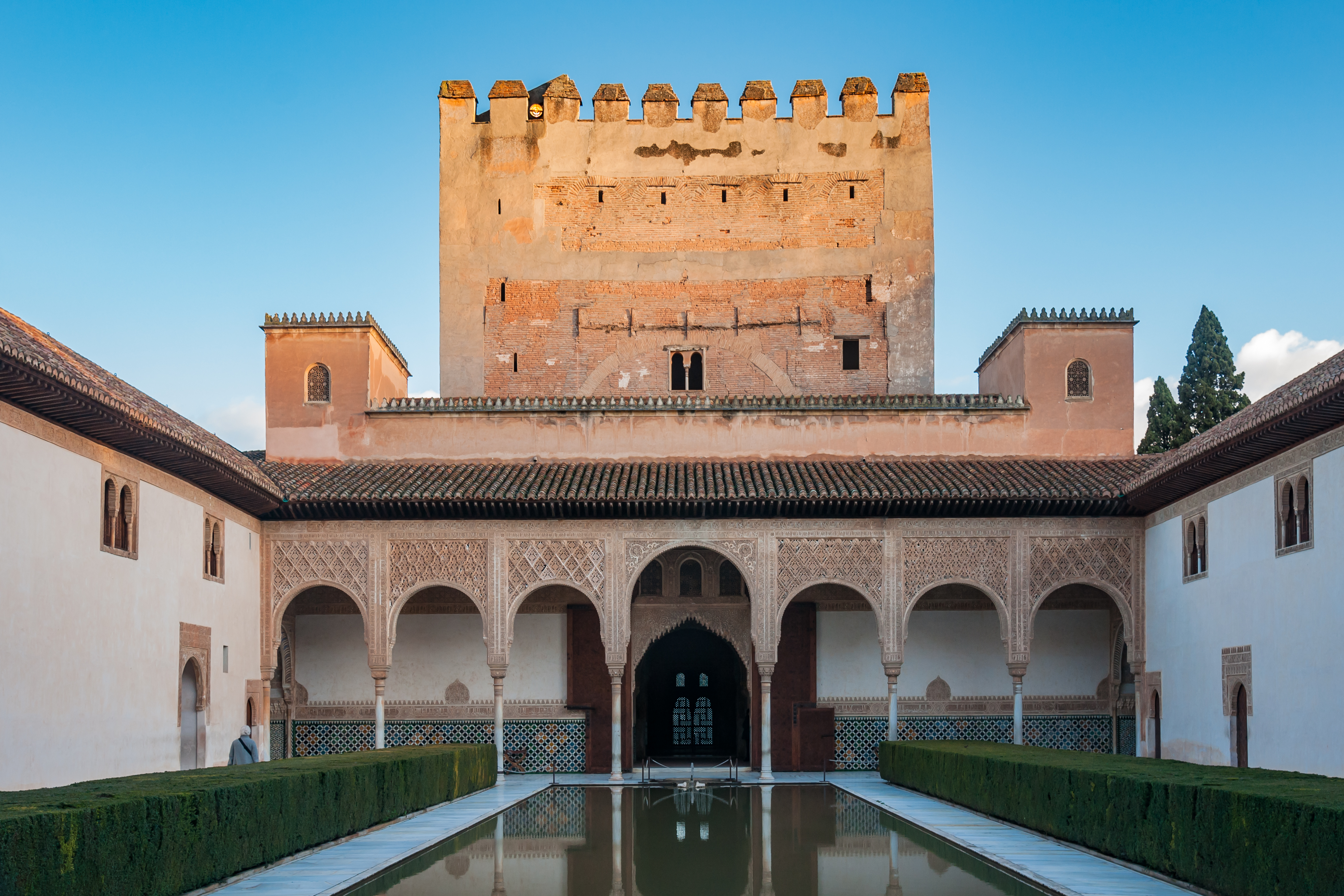 Photo by CEphoto, Uwe Aranas
Photo by CEphoto, Uwe Aranas
The pool is perfectly North oriented.
Above the alicatado Ibn Zamrak praise the conquer of Algeciras by Muhammad V:
entraste, abriendo puerta antes cerrada,
tras veinte otros castillos, y a tu tropa
de botín cuanto había repartiste".
Pórtico Sur.
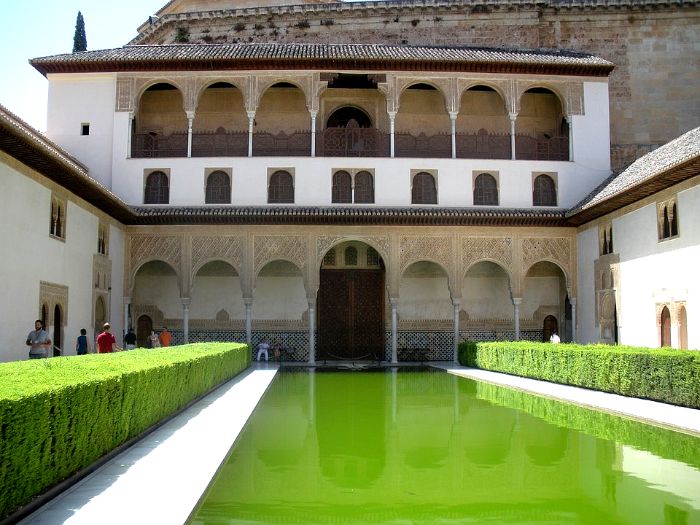
Image credit: alhambravision
- Residence for the male children and their professors.
Sala de la Barca
- Passing the North Portico and right before the Throne Room there is the Sala de la Barca. Named not because the shape of the dome but because of a simplification of the original arabic name al-Baraka meaning “Blessing”.
- There was an fire in 1890 that destroyed this roof and the portico’s one.
- Towards Throne Room, there is, to the left a door to the upstairs rooms which were the winter sultan’s chambers. To the right, there is an oratory with mihrab which is the best one oriented to la Meca in Al-Ándalus.

Image credit: alhambradegranada
Salón del Trono, de Comares o de los Embajadores
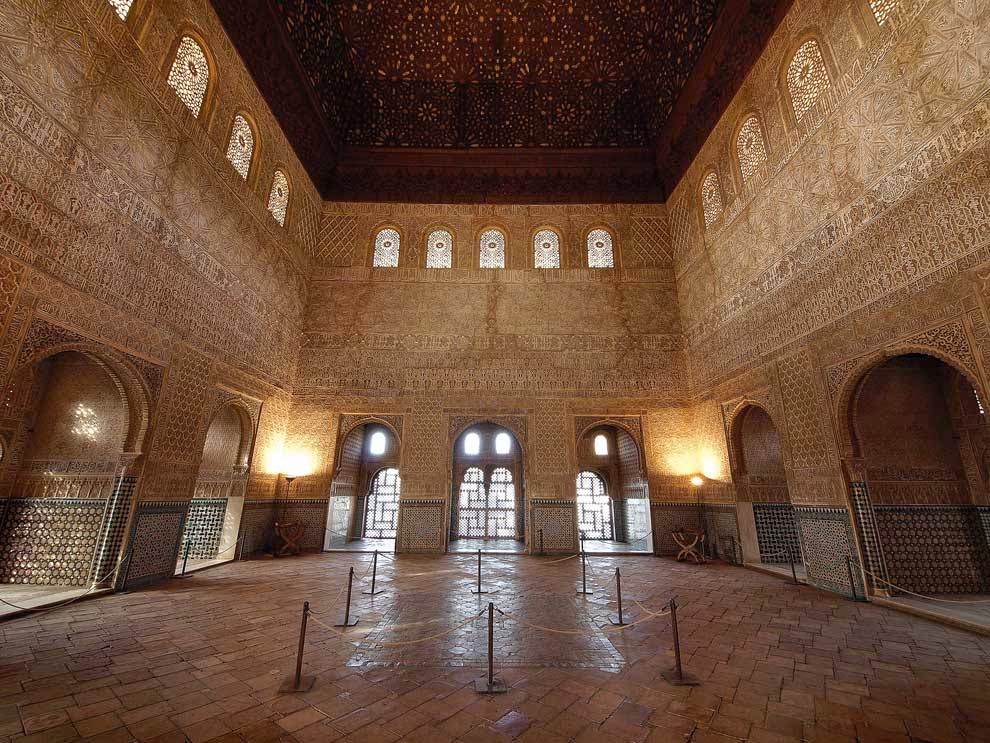
Image credit: sombrasdetinta
- Where the Capitulaciones were signed.
- Where the sultan received the ambassadors. The room is very dim, with the sun coming from behind the sultan, such that he could see the visitors but they could not see him.
- This rooms shows the power of the sultan, blessed by god, only after him. There is no place without decoration, it is everywhere as Alá. The polychromy is missing.
- The dome holds an important symbolism. The night sky of the eary muslim expansion, the seven skies to be crossed before reaching God throne, the Paradise, which is the eighth sky. There are also the four life trees coming down from the center to the corners. The sultan was below as an earthly representation of the divine. The dome is composed of 8017 wooden pieces as a giant puzzle of taracea. Just below the mocárabes cornice there is the 63 sura of the Corán (“Sura del Señorío”) which describes the “Seven skies of the Coran”.
- The celosías (lattice) were colored stained glass windows (vidrieras), but they were destroyed in the explosion of the S. Pedro powder keg (polvorín) in 1590.
- One of the East (right) alcobas lead to Emperor Carlos chambers.
- Nasrid polygons, deformation of a square.
- The Nasrid Bone
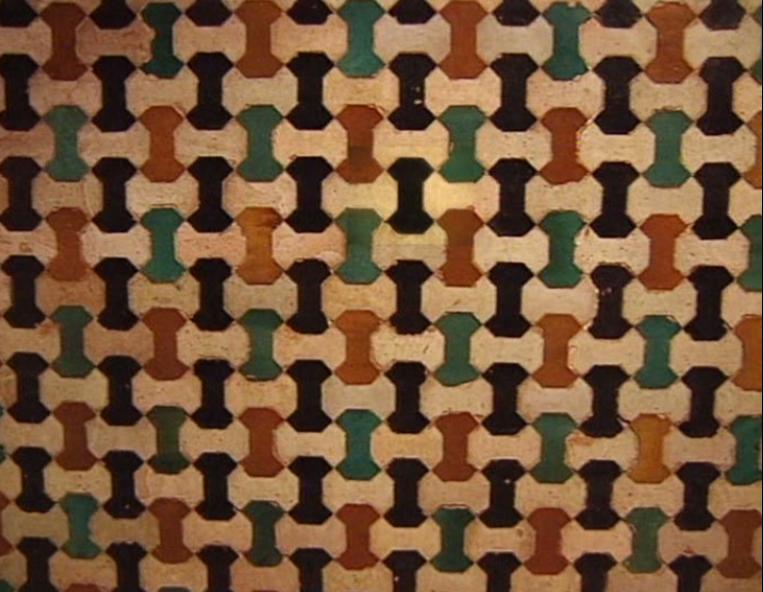 Image credit: RTVE: La aventura del saber
Image credit: RTVE: La aventura del saber - The Flying fish
 Image credit: Acorral
Image credit: Acorral -
The Molinete
 Image credite: Gloria Morán Mayo
Image credite: Gloria Morán Mayo - The Bat or double molinete:
The restoration intended to clearly distinguish the original version from the new addition.
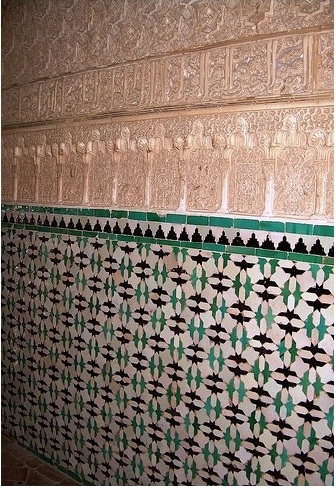
Image credit: Tallerceramicoblog- Salomon Star: one square rotated.
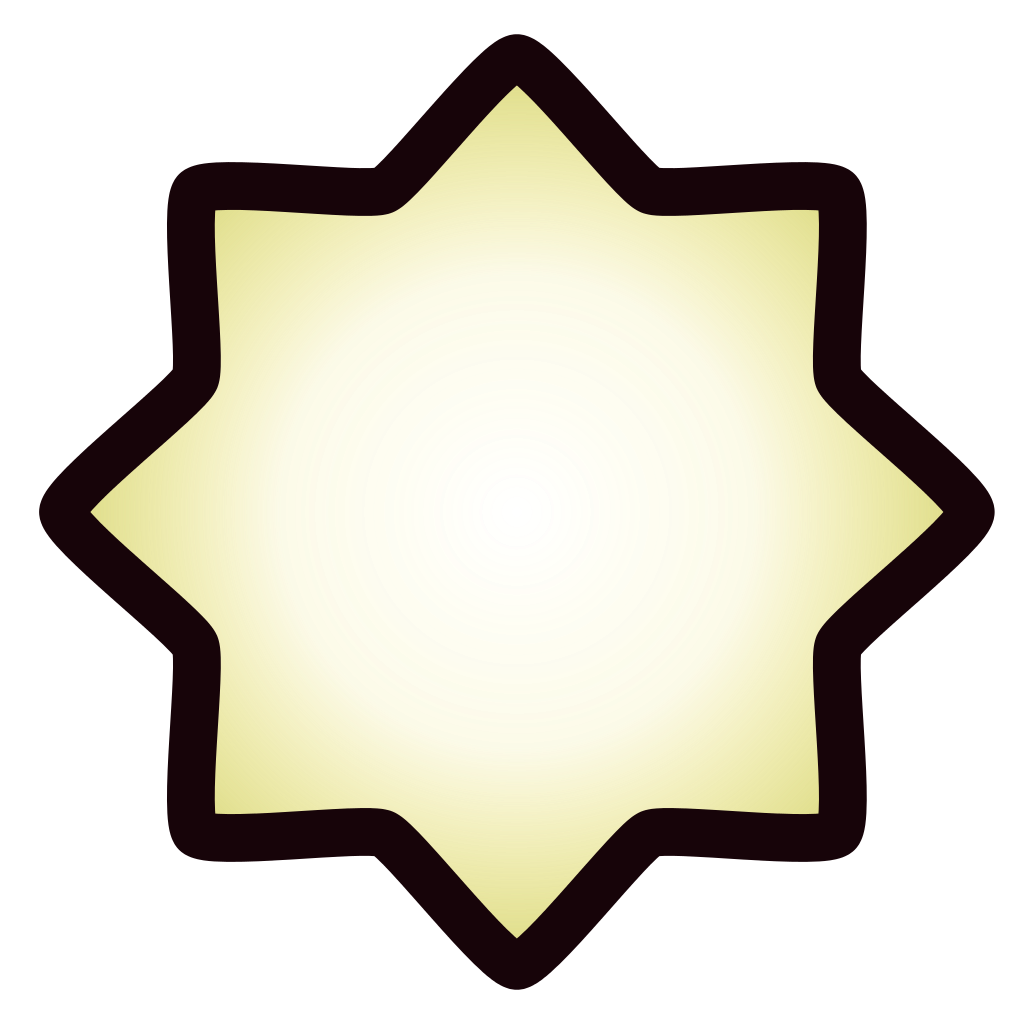 Image credit: Er principito andalú
Image credit: Er principito andalú
- The Nasrid Bone
El Patio de los Leones

- Built by Muhammad V. Maximum splendor of Nasrid art.
- Represent an antecedent to the Paradise.
- 124 Columns of Macael (Almería) marble. Remind of a forest of palms. Arch and roofs of mocárabes remind to curtains. Everything was colored. It has cristian influence, since Muhammad V spend some time in Seville with his friend Pedro I el Cruel. Colored roof tiles were added in zig-zag between 1871-82 as a false “oriental” imagination, but was restored to the original version by Modesto Cendoya in 1910 and Leopoldo Torres Baldás in 1927-36.
- 4 rives of the Paradise: Fisón, Guihón, Tigris and Eúfrates. Stream of water, milk, wine and honey.
- 12 lion (~12 tribes of Israel) all of them unique. Similar to the one in bronze in the Salomon temple, which had oxen (bueyes) instead of lions. It dates from the first Zirí kingdom (s. XI) in another garden and seems to be retouched during Muhamad V time since it has engraved a poem from Ibn Zamrak praising his king. For a while, it had a second pile on top, which is now in the Adarves garden. Richard Ford 1831 signature in the taza.
- A glazed dome was added to the Oriental pavilion in 1859 to try to be more “arabic” but it was removed by Leopoldo Torres Balbás in 1934 to keep the original version, although with popular controversy.
- The original entrance was in diagonal, changed due to Carlos V palace.
-
Gallego Burín: En el Cuarto de los Leones el arte arábigo granadino alcanza su máximo esplendor. En él, todos sus elementos se afinan y sensibilizan hasta límites insospechados: un espíritu nuevo preside su ordenación y agrupamiento, y la luz, el color y el agua vienen a integrar esta arquitectura quebradiza y sutil en la que se agotan todas las posibilidades decorativas apareciendo en ellas una inspiración naturalista que contrasta con la del periodo anterior, más abstracta y geométrica.”
- Find Archimedes spirals in the small doors arches.
Sala de los Mocárabes
- For receptions and waiting room.
- It lost their mocárabes dome in the explosion in 1590 of the polvorín de San Pedro.
- In the dome, we can see a “F” and a “Y”, which do not stand for Fernando and Isabel but for Felipe V and Isabel de Farnesio who visited the place en 1729.
Sala de los Abencerrajes
- For private parties.
- The name comes from the legend that the sultan killed 36 Abencerrajes in this room and the the red color of the fountain is due to the blood. However this is not true, before the Abencerrajes, they killed some young princes. Only the head of the Abencerrajes was killed for conspiration against Muhammad VIII, the Little. Later he was imprisioned in the Salobreña castle and executed. The red color is only due to the oxide.
- The Alhambra is the only medieval monument which has an example of all the 17 possible kind of mosaics, before even the theory was developed. Until recently, it was thought there were only 16 of them, but a professor from the University of Granada discovered in this room the last of them. It is in the albanegas of the arch.
- The Alhambra also exhibits the 7 possible kinds of frieze (frisos).
- We can find Christian “azulejos” in the room which are also present in the tower of the San Gil and Santa Ana church. We can also see the “leave” mosaic in the above windows.
Sala de los Reyes
- Public celebrations with a large number of guests.
- Name due to the scene of the dome, where several kings are represented. They were also thought as judges and for some time it was know as the Justice Room. The representation of people is not forbiddem in the Islam religion, only the representation of God. It is thought that the painter was Christian or an Arab with Christian influence, due to the easiness in the Christians clothes and difficulty in the Arab ones.
- Since the epoch of Catholic Kings until 1618 when Santa María de la Alhambra was finishes, the chamber was used as a chapel.
Sala de dos Hermanas
- Name after the two big marble slabs on the floor.
- Here is where the sultan’s wife and her family lived. Boabdil and his mother lived here after she was substituted by Isabel de Solís.
Mirador de Daraxa o de Lindaraja
 Image credit: Palickap
Image credit: Palickap
- Its name comes from Ayn Dar Aisa, which means “the eyes of the house of Aixa”. Before the chambers of Carlos V were built, almost all Granada could be seen from here.
- The ledges (alféizar) are so low to allow people sit on the ground.
- The “geminada” window has a special proportion, the Cordoba proportion, which is related to the ratio between the radius of a circle and an inscribed octogon (~1.3).
- The albanegas show a peculiar hand with a bouquet of flowers.
- There is one of the few examples of a regular nine-sides polygon, which is impossible to build with ruler and compass. There are approximate methods that the Nasrid artists knew about.
- Dome with colored glass.
Capilla Real
The following audio files are freely available through the Official audio guide of Capilla Real de Granada.




